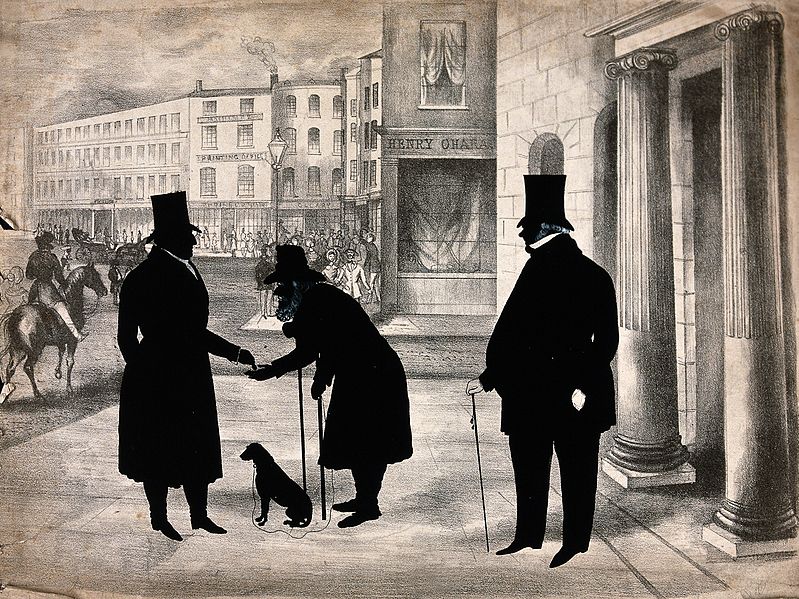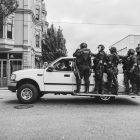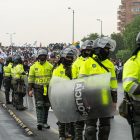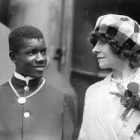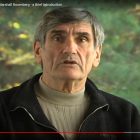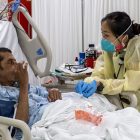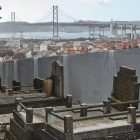The overwhelming majority of the world’s population is doing work in the form of jobs that are insufficient for sustenance, assault workers’ dignity, and lack meaning. Even when the pay is sufficient, jobs are still lacking in dignity and meaning.
Tikkun Daily
The Cultural Foundations of American Policing
|
Racist Policing in the US and militarist sustaining of U.S. interests around the world are different faces of the same reality.
Tikkun Daily
Apart and Together (part four)
|
The Coronavirus has brought new possibilities as it calls into question one of the deepest and most pervasive narratives of modern life: that every problem originates in an individual and can, and should, be fixed by individuals for themselves.
Tikkun Daily
King’s Two Messages
|
There is a window now open for far more significant change than the single-issue focus on police brutality; a time when such brutality can be seen as merely a tragic symptom of much deeper causes.
Undercover Hasid
|
Just as the pandemic began, Michel Gurwitz, born in a D.P. Camp to holocaust survivors, scion of Holy Masters, a beat Jewish mystic who spent his life raising holy sparks, sometimes as a nomad on the streets of New York–passed on to the higher worlds.
Tikkun Daily
Apart and Together (part three)
|
Our future depends on our ability to quickly align our policies and practices with the reality of our embeddedness within an interconnected web of life. The changes this calls for are sweeping and profound: restoring reverence for life, seeing all as kin, and seeing no one and nothing as “other.”
Tikkun Daily
Jewish Social Justice in Action
|
Two Jewish social justice organizations in Arizona mobilized to help communities impacted by Covid-19 by providing masks for those who need them.
Tikkun Daily
Is Nonviolent Use of Force an Oxymoron?
|
What do we actually mean by “use of force” and what counts as such? What makes it “necessary” to use force and how do we recognize that line? What, if anything, can we look at to have any sense of solidity that our use of force indeed stays on this side of an elusive line on the other side of which lies outright violence? In an attempt to answer these questions and more, I now have a template I will unpack in this article. Here it is:
“Use of force is consistent with nonviolence to the extent that we use the least amount of force possible, with the most love possible, aiming at (re)creating conditions for dialogue; that we make the choice using as much nonreactive discernment as possible, with as much support for the choice as possible, and while mourning not seeing another way to respond to a situation in which vital needs are at stake except to use force.”
Tikkun Daily
Pandemic in the Age of Trump
|
Unlike President Trump, who ruthlessly sees people and the world divided into winners and losers, the pandemic opens the path to a more just and equitable system.
Tikkun Daily
Sunday on the Patio During the Pandemic
|
Inspired by a painting by George Seurat and the musical “Sunday in the Park With George”, Valerie Elverton Dixon uses colors to describe a Sunday afternoon during this pandemic and thinks about the moral demand and the sacrifice of touch that the pandemic requires. In the end, compassion will make humanity better for generations to come.
Tikkun Daily
Apart and Together (part two)
|
One of the things the coronavirus pandemic opened up is the possibility of exposing the incapacity of the market to attend to need. If the market were able to attend to needs, there wouldn’t have to be any governmental mobilization anywhere, because it would happen by itself through the mechanism of the “invisible hand.”
Tikkun Daily
Sharing Impact for Liberation (part two)
|
Because just about all of us have deeply internalized the mindset of scarcity, separation, and powerlessness, going for liberation will take a long time before it becomes spontaneously available.
Tikkun Daily
Sharing Impact for Liberation (part one)
|
The power to choose to speak in ways that will support what we want, is one of the ways the oppressed can have strength.
Tikkun Daily
Here in these End-Beginning Times
|
Laura Johnson shows her daughter abundance instead of scarcity.
Tikkun Daily
Death in the Midst of a Pandemic
|
Valerie Elverton Dixon shares her thoughts about life and death.
